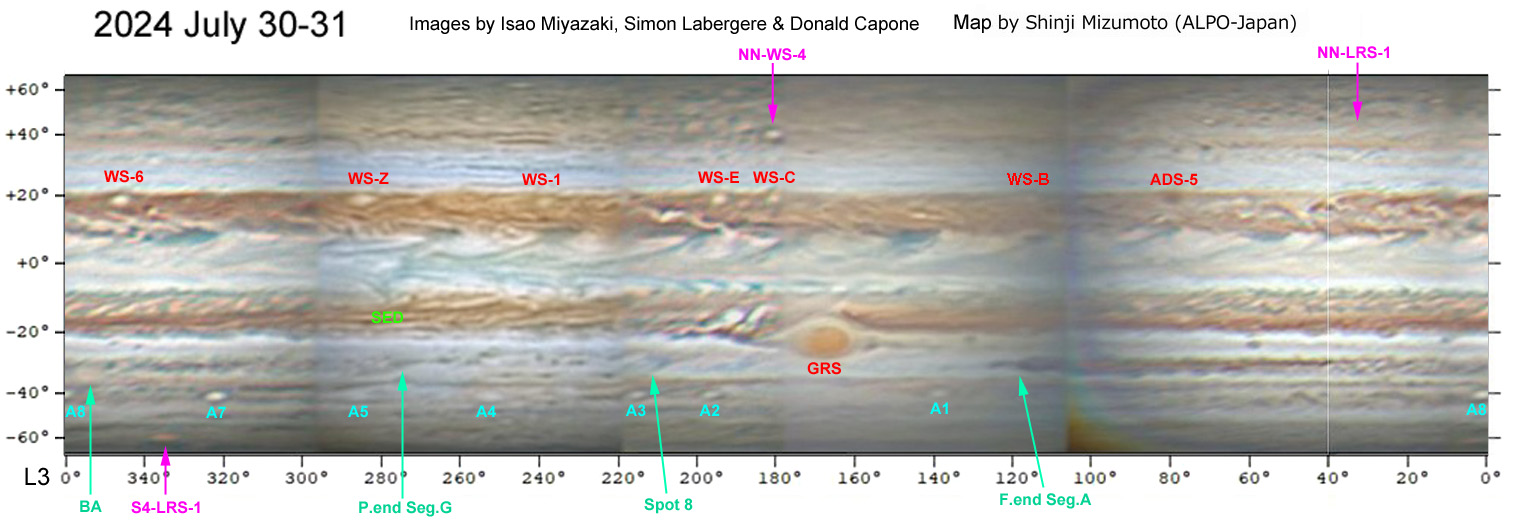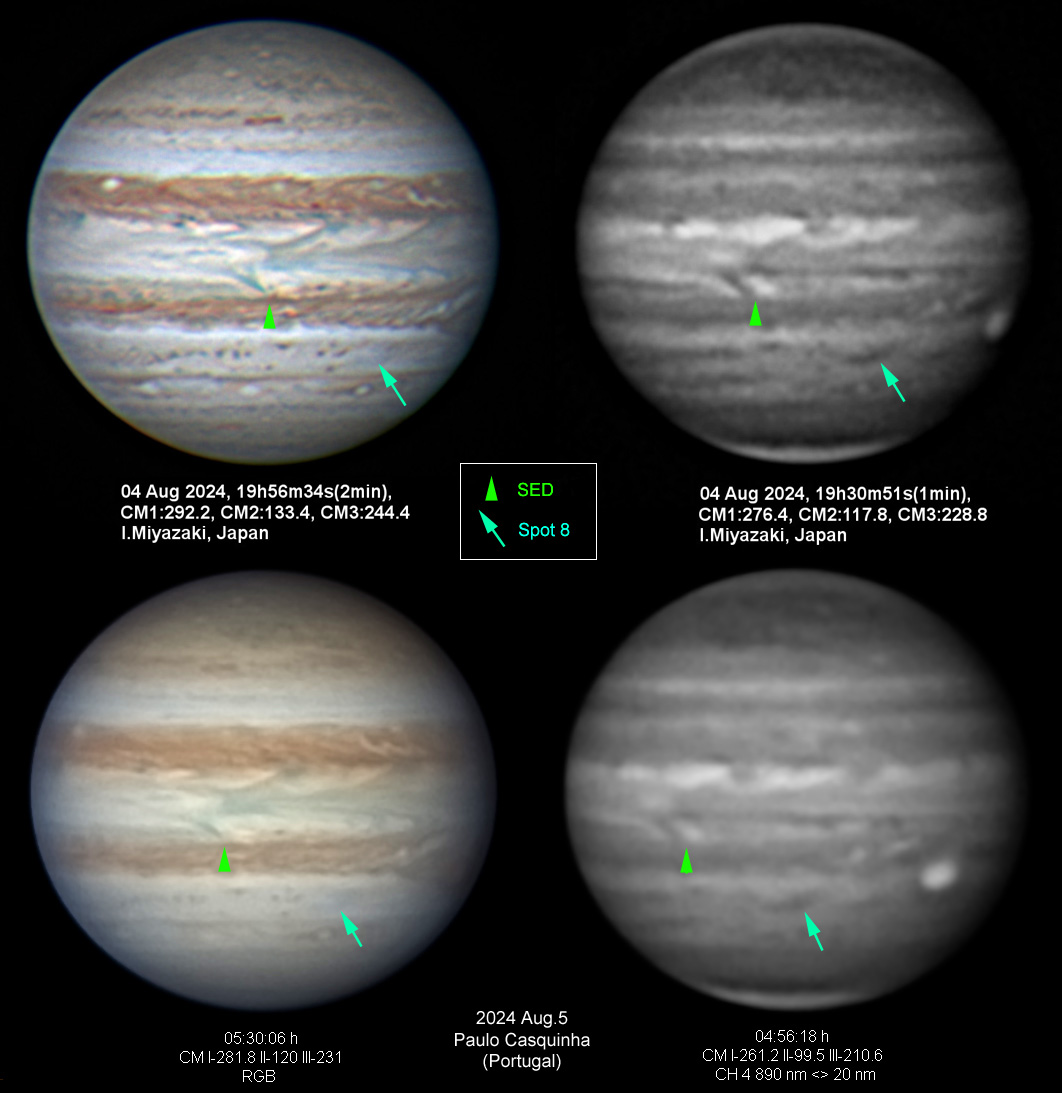Report no.1
Jupiter in 2024/25, Report no.1
John Rogers (BAA) & Shinji Mizumoto (ALPO-Japan) (2024 August 7)
Now that the new apparition of Jupiter is under way, here is a full-planet map (Figure 1), with the major features labelled. As usual, a full series of maps is posted on the ALPO-Japan web site (https://alpo-j.sakura.ne.jp/Latest/j_Cylindrical_Maps/j_Cylindrical_Maps.htm).
Also, JunoCam has continued imaging the planet during solar conjunction, and the resulting maps have been posted in the perijove reports on the BAA web site (https://britastro.org/section_information_/jupiter-section-overview/results-from-juno-2024). The last complete JunoCam maps were at PJ60 (2024 April 9) and PJ61 (May 12, omitting high northern latitudes). As Juno’s orbit evolves, subsequent maps miss the equatorial region and most of the N hemisphere, but still cover the mid/high southern latitudes (PJ62, June 13; PJ63, July 16).
The planet has undergone several interesting changes during solar conjunction, as follows.
>> The NEB expansion has now gone to completion all round the planet. There are 6 anticyclonic white ovals within the darkened strip, all tracked since last apparition when some of them formed as anticyclonic dark spots.
>> There is a broad brownish-grey sector of EB around much the planet – not very dark, but it could be the start of a dark coloration event as in 1999 and 2006. Also, some of the NEBs dark formations are now very conspicuous.
>>There is a distinct South Equatorial Disturbance (SED), on the SEBn edge around L1=280. Along with features of the EB and EZ(N), it gives the impression of a “three-tiered structure” across the EZ, and there is disturbance on the SEBn preceding it. It resembles the SED of the early 2000s in both visible and methane-band images (Figure 2). It has been visible since adequate observations began in late June, but it has apparently been present in much less prominent form for two years previously as its longitude is consistent with a gap in the SEBn chevrons that we have tracked in JUPOS data since 2022 June (see our 2022/23 report no.3 & 2023/24 report no.3). Only now has it developed obvious structure. The SED will pass the GRS around August 16, and observations from then on will be especially interesting, as the earlier SED sometimes became more prominent soon after passing the GRS.
>>The GRS has suddenly accelerated, for no obvious reason, from DL2 = +1.85 deg/30d (2023 May to 2024 April) to DL2 ≈ +0.5 deg/30d (2024 June-July).
>>In the STB, Spot 8 (and the smaller cyclone ~25º preceding it) are approaching the GRS and will pass it in the coming months. Both cyclones are dark in methane images (Figure 2). The sector following Spot 8 was fairly clear in recent JunoCam maps, but now contains many small dark spots again, which may indicate that STB Segment G has resumed more turbulent activity.
Figures 1 & 2 are posted below.
This report is also posted as a PDF: Jup-Report_2024-25_no1


| The British Astronomical Association supports amateur astronomers around the UK and the rest of the world. Find out more about the BAA or join us. |
